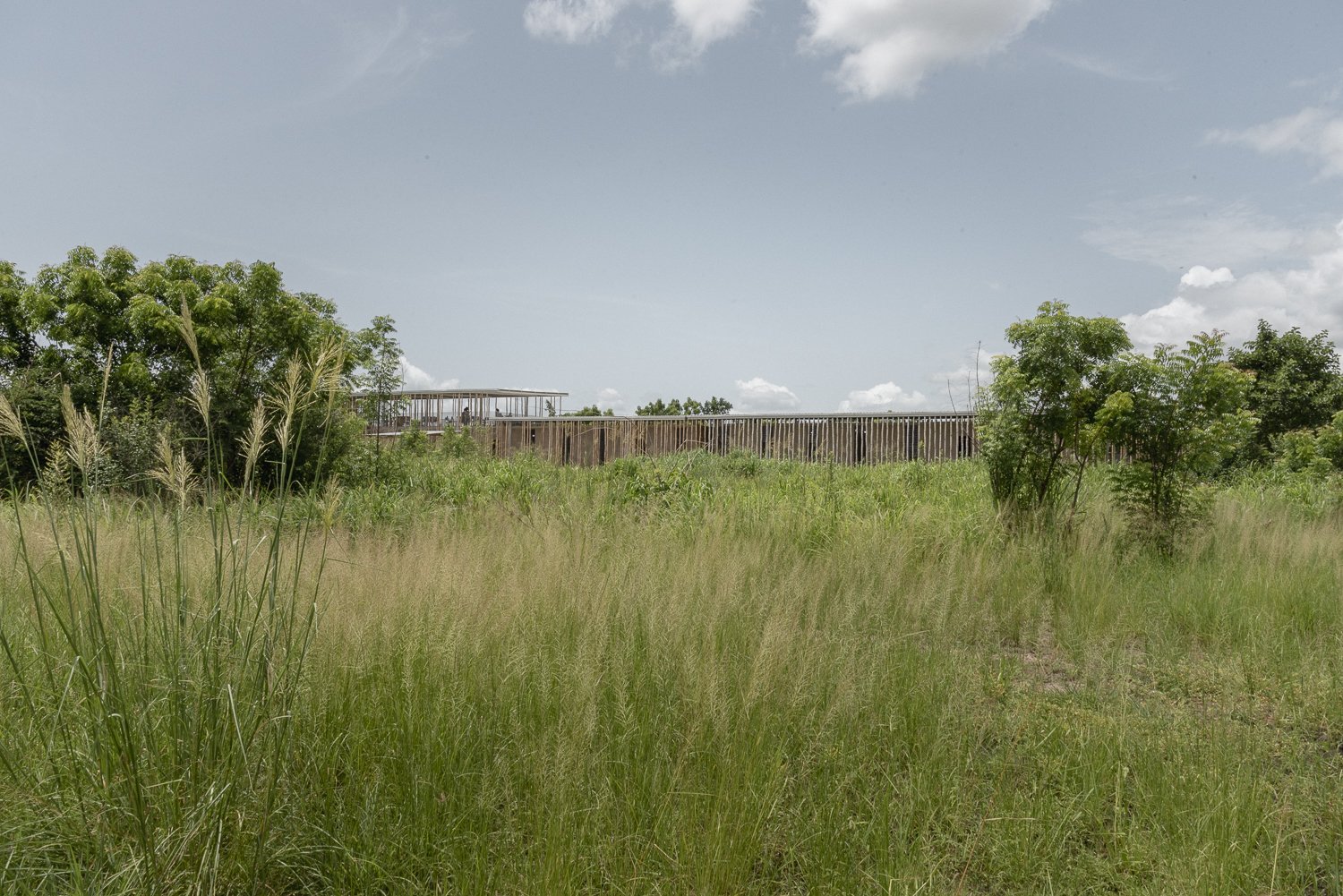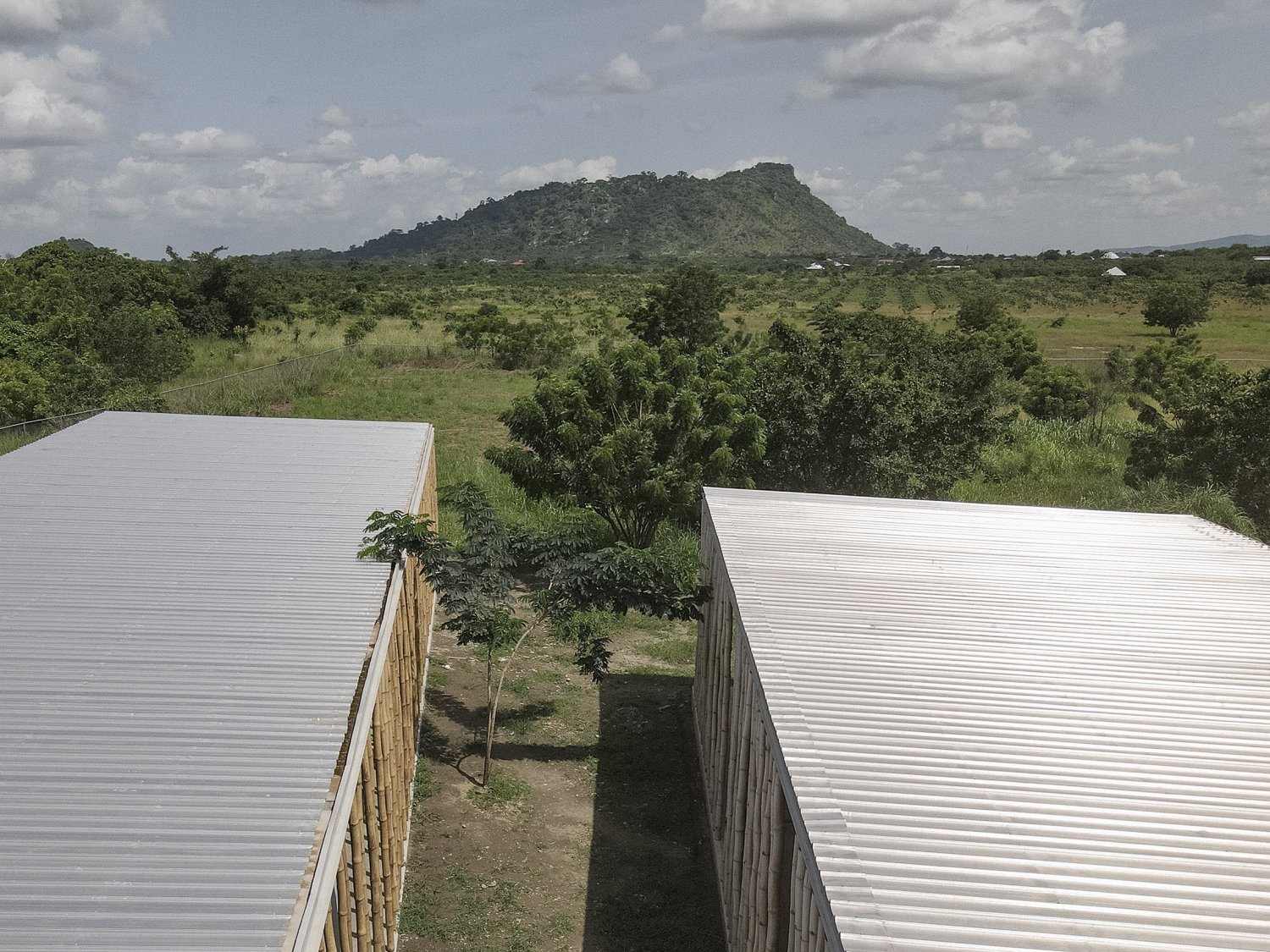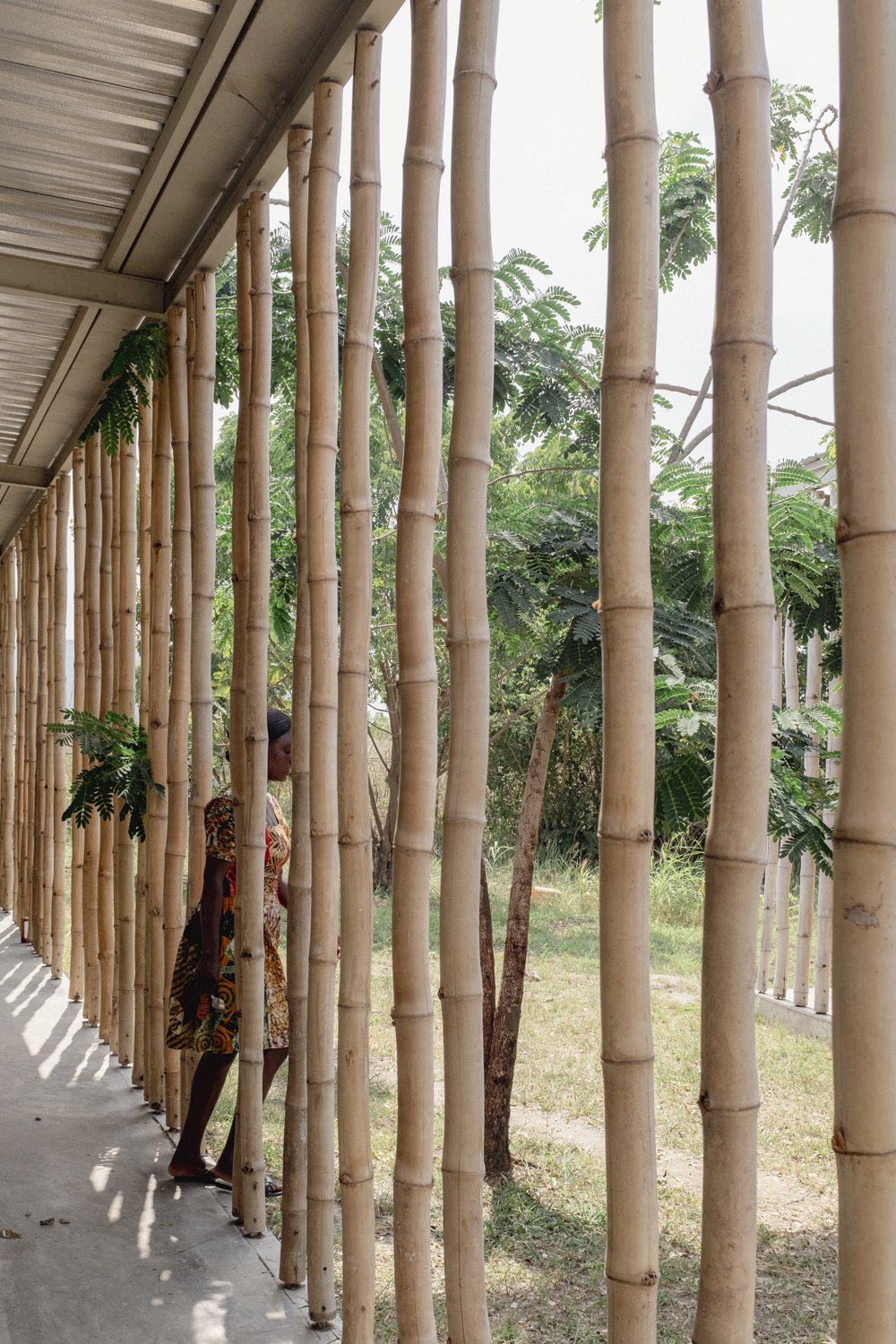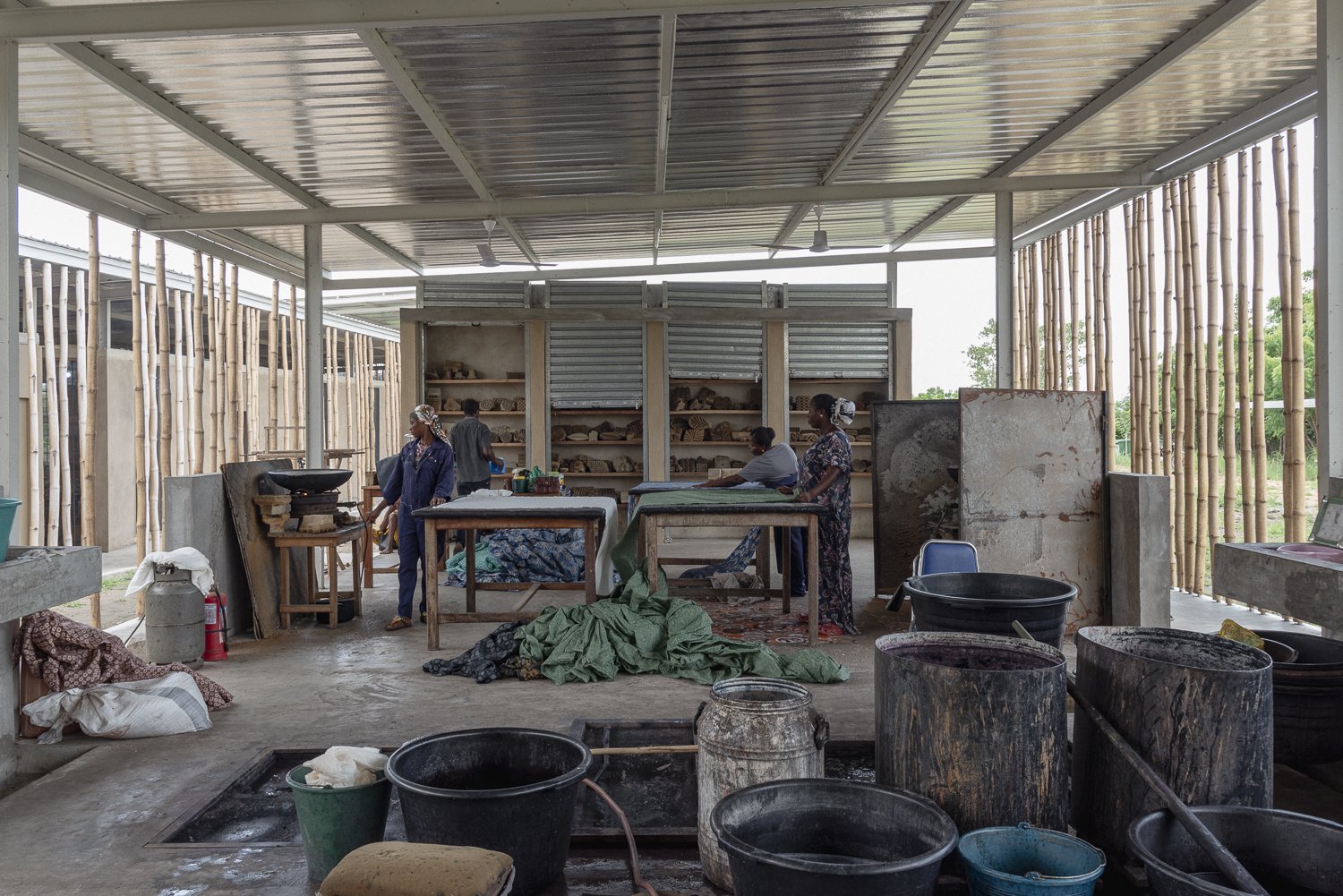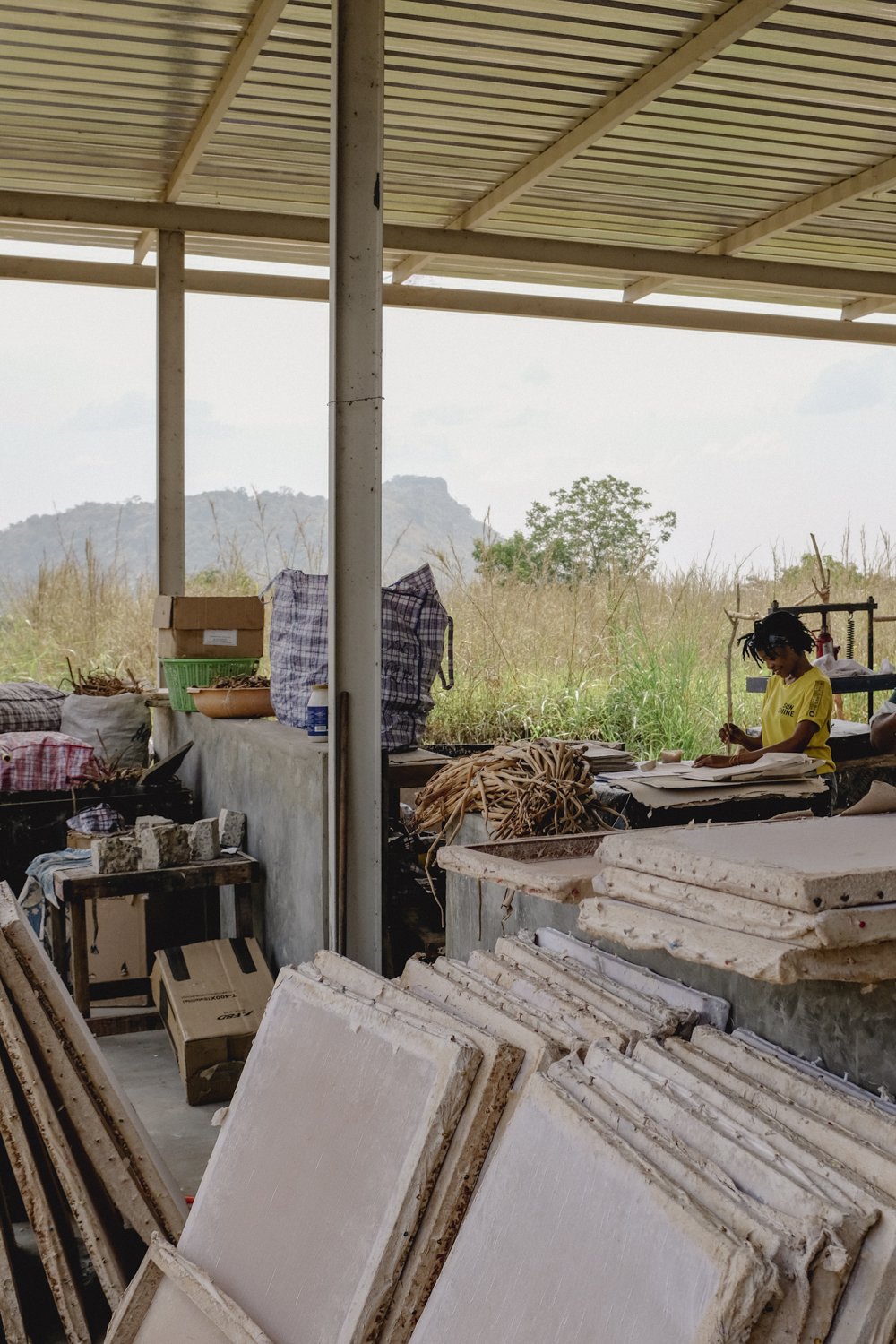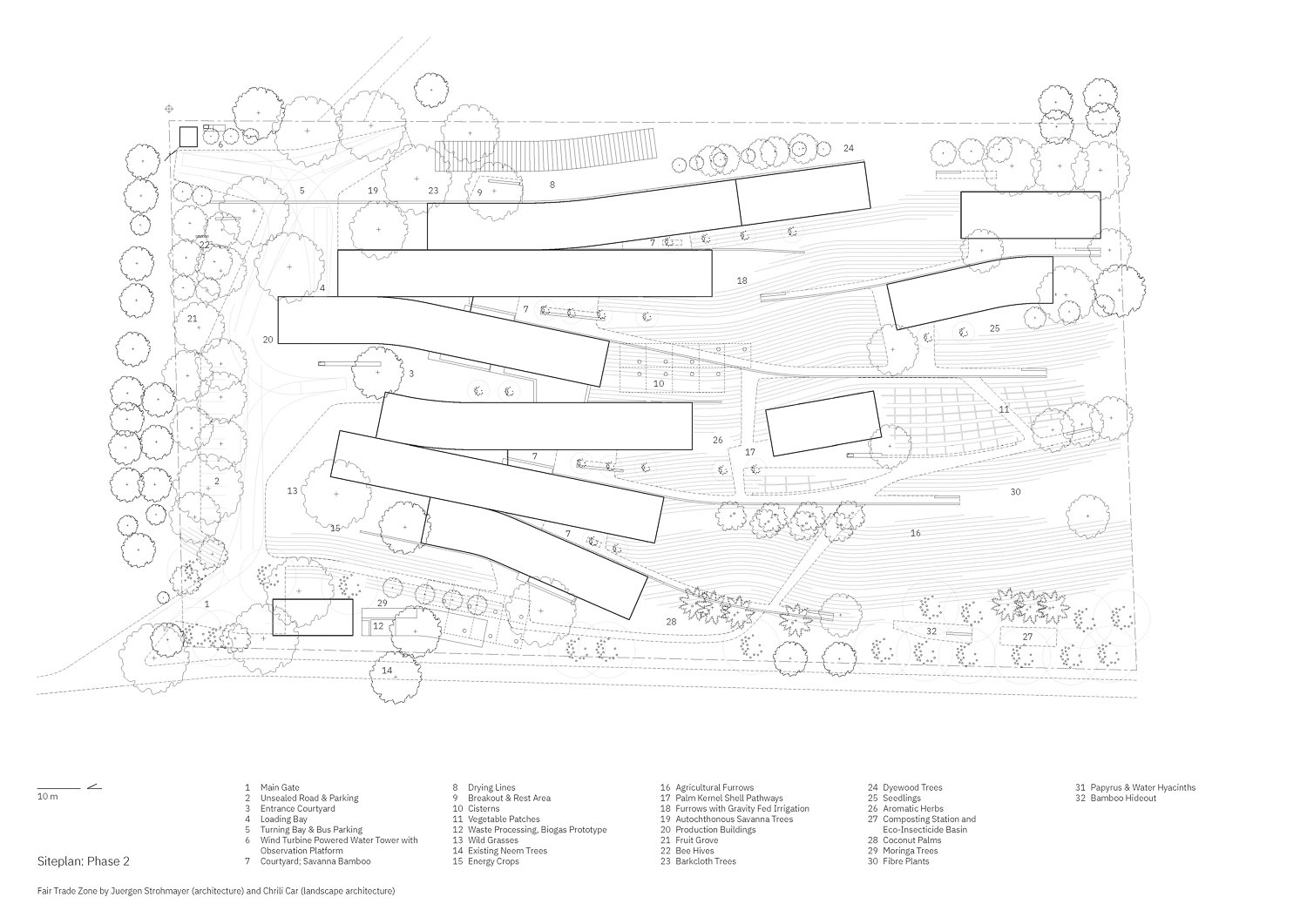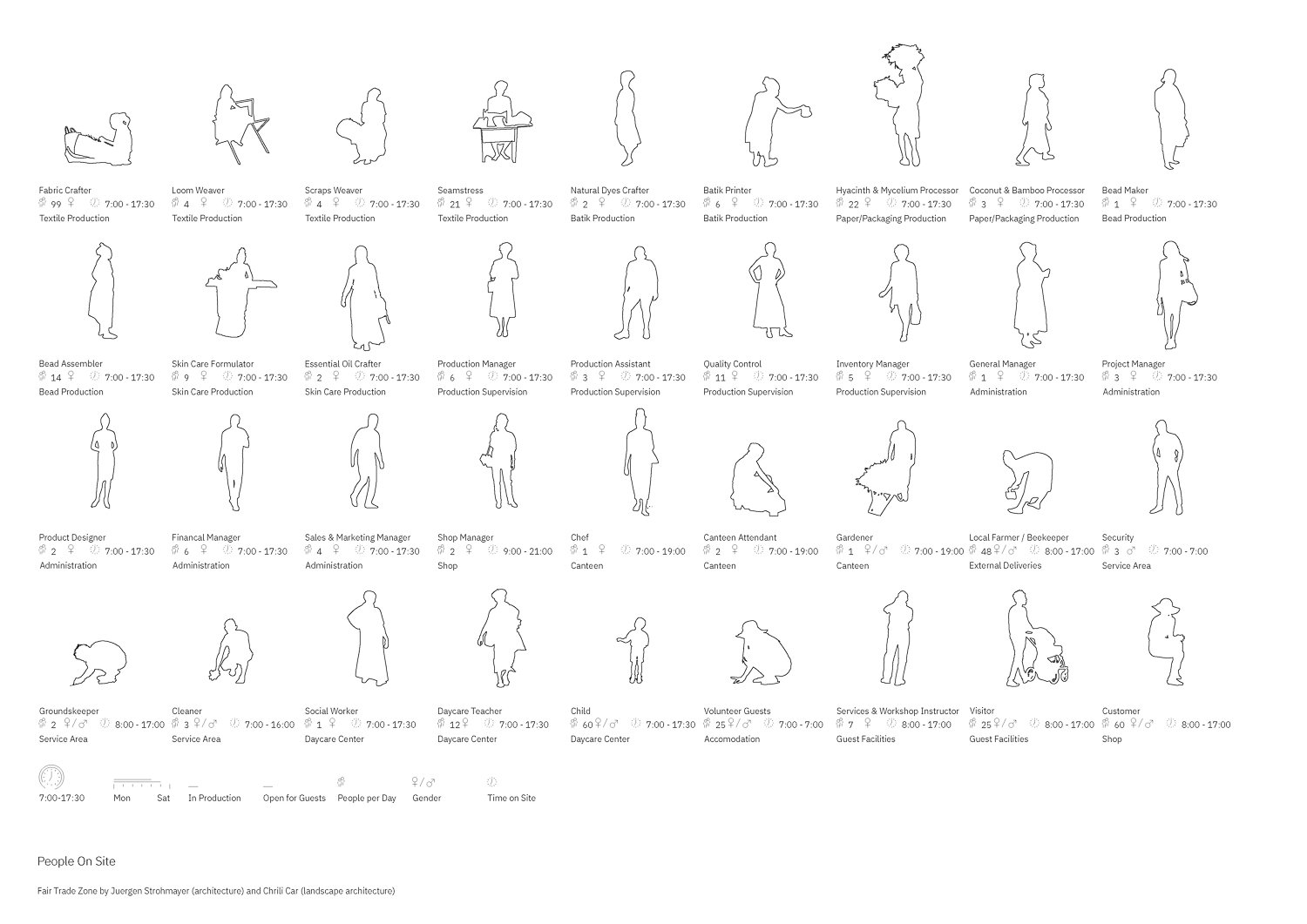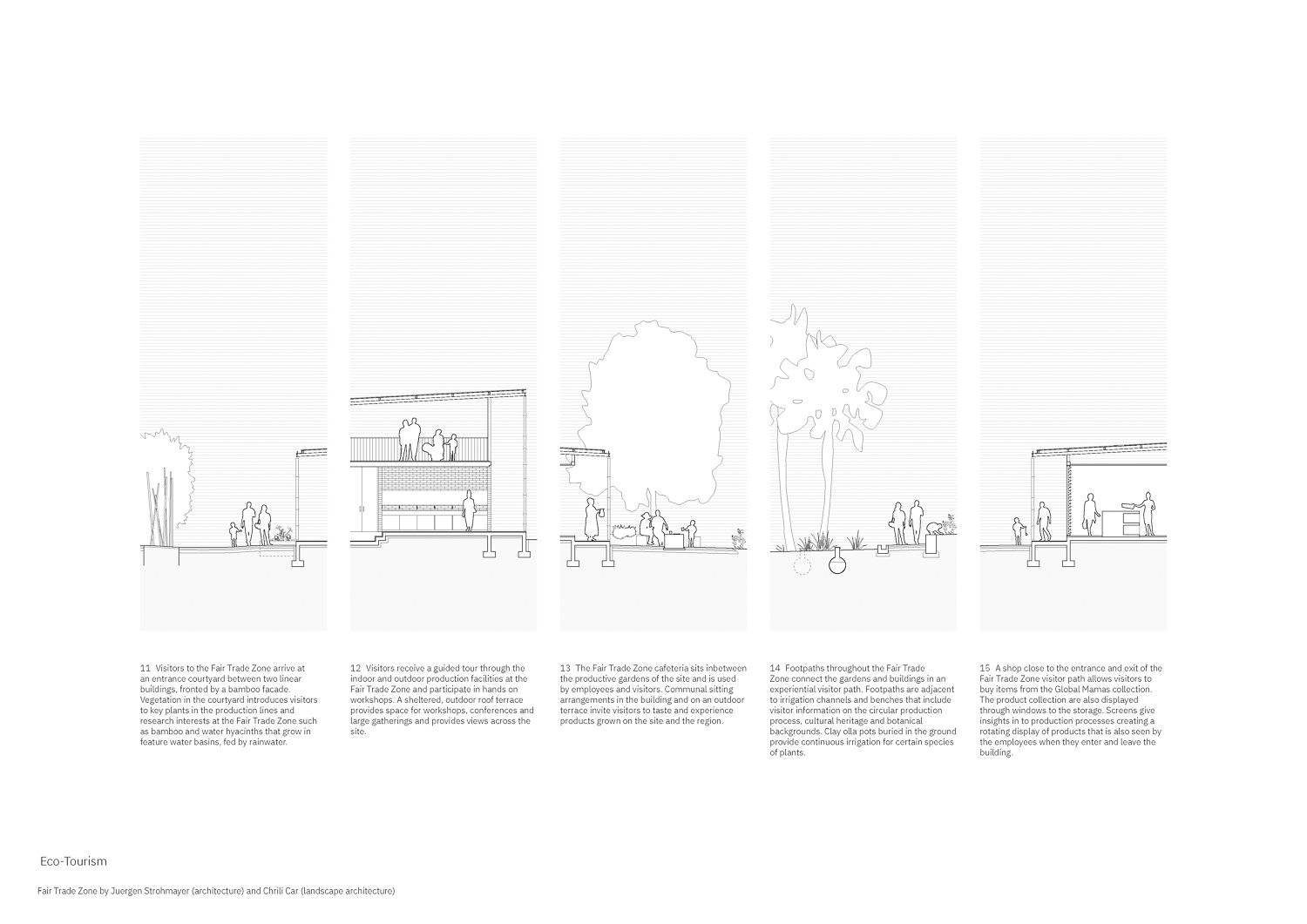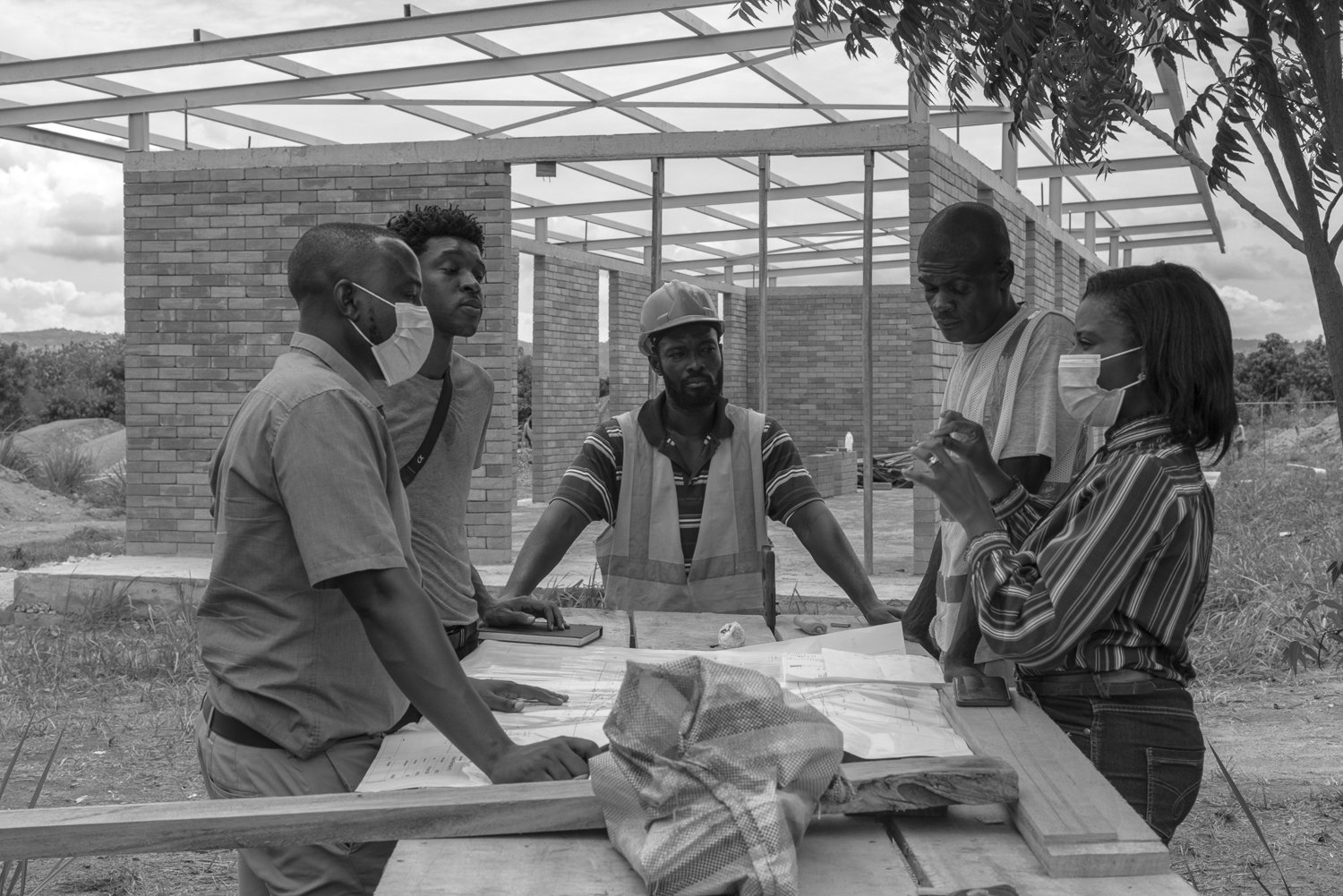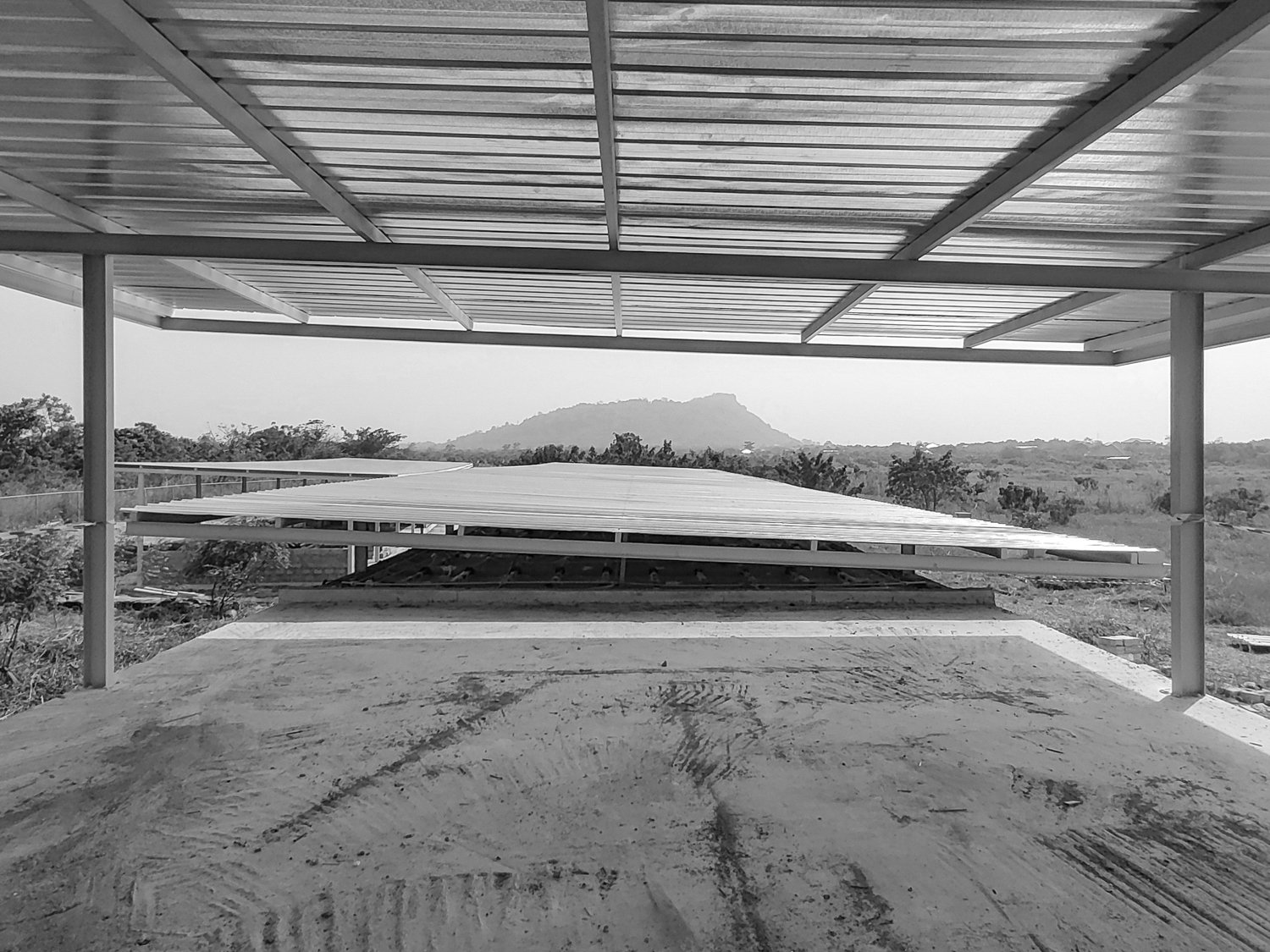Fair Trade Zone
The design of the Fair Trade Zone understands circular economy as a spatial metabolism between architecture and landscape. Led by a women’s cooperative, the Fair Trade Zone in Akuse, Ghana, is based on an alternative model for integrated sustainable manufacturing, agriculture, and eco-tourism in Ghana. While the raw materials processed in the built interior grow outdoors in productive gardens, the buildings harvest rainwater and nourish the plants with ecologically purified production wastewater through the courtyard’s drainage channels and gravity-fed furrow irrigation. The result is a striated landscape composed of different biomes suitable for the diverging ecological requirements of a dye garden, a paper garden, a textile garden, a skin care garden, and an energy garden. Interwoven into the productive terrain are a variety of spaces ranging from modular indoor production rooms bordered by shaded outdoor circulation spaces that open into courtyards and social spaces.
As a driving force for rural empowerment, the new Fair Trade Zone creates and ensures jobs for 200 female artisans and will be a step towards gender equality. Its design supports the visions of the organization in becoming a sustainable alternative model to production facilities in the region by providing a socially conscious and ergonomic work environment for their employees, creating a tourist destination, and integrating innovative building strategies and technologies throughout the site.
The natural topography of the land serves as the main guiding theme of the design. Curved, elongated buildings adapt to the contour lines of the site and each houses different production lines, which are associated with adjacent productive gardens. Individual buildings allow Global Mamas to construct and start operations of the facilities in phases. Embedded in the lush vegetation are retreats, a daycare center, as well as a cafeteria set in a communal kitchen garden. Being open for guests, the Fair Trade Zone is also a new ecotourism location that offers educational workshops and tours along its circular pathway, which leads through the economic and ecologic diversity of the project.
By pairing formal minimalism with ergonomic detailing, the architecture draws full attention to the vibrant manufacturing processes and the rich biodiversity of the land. Locally harvested bamboo serves as a shading screen on eastern and western facades, allowing natural cross-ventilation to occur and filtering natural sunlight, while adding to the linear and cohesive visual character of the buildings. Walls are offset from the perimeter of the building to avoid direct sun exposure and consist of reinforced interlocking compressed earth bricks. Palm kernel shells, an agricultural waste product, cover the unsealed access roads and onsite pathways. The material palette is composed of natural materials for barrier-free, soft and permeable transitions, natural ventilation and social inclusion within a connective landscape that transcends the site boundary of the 2 hectare large plot. The curved design of the buildings and the layout of courtyards reveals views as far as Krobo Mountain, a culturally significant marker in the surrounding landscape. The focus on building with the topography and the terraced water system are both inspired by the pre-colonial legacy of the Krobo. Prior to their eviction from Krobo Mountain during British occupation, the Krobo devised innovative rainwater harvesting systems and had created unique terraced settlements.
The design of the Fair Trade Zone focuses on integrated renewable energy with a wind turbine-powered water tower, solar energy, passive cooling, water-saving toilets, the ecological treatment of toxic dye waste water with moringa flocculants, biogas and biochar production from human and production waste, and on-site production of ecological fertilizer and insecticide.
The Fair Trade Zone’s design process follows a cooperative and participatory approach. Outdoor areas for batiking and papermaking are designed with bespoke, ergonomic production floorscapes that have been developed in design workshops together with Global Mamas’ production teams. The realization takes place step by step by local builders as a growing facility. The interior organization is based on a modular construction system that supports phasing and versatility of use. The outdoor spaces will be developed in detail in workshops, which join traditional local and international expertise.
Authors: Juergen Strohmayer (architect) + Chrili Car (landscape architect)
Location: Akuse, Ghana / Program: Manufacturing, agricultural and tourist facility / Year: 2013-2017 exploratory phase; 2018 - 2020 inception, workshops, land search; 2020 construction starts; 2021 Phase 1 opens / Client: Global Mamas / Architect: Juergen Strohmayer / Landscape Architect: Chrili Car / Design team: Abdul-Rauf Issahaque / Contractor, structural, permits: ALConstructs / MEP engineers: Jamstech / Consultants: Sophie Morley (project preparation), Mae-ling Lokko (ergonomics and material research), Ingenieure Ohne Grenzen Germany (MEP)
Press: Architectural Review (2023) , Austrian Cultural Forum Rome (Exhibition, 2022)
